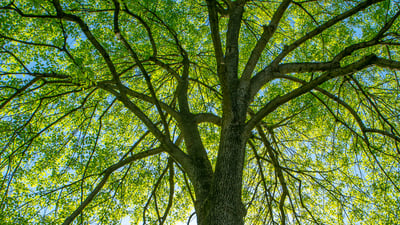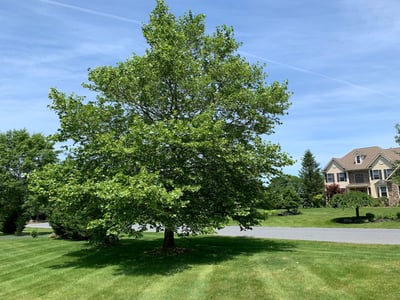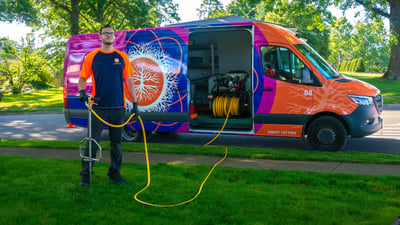

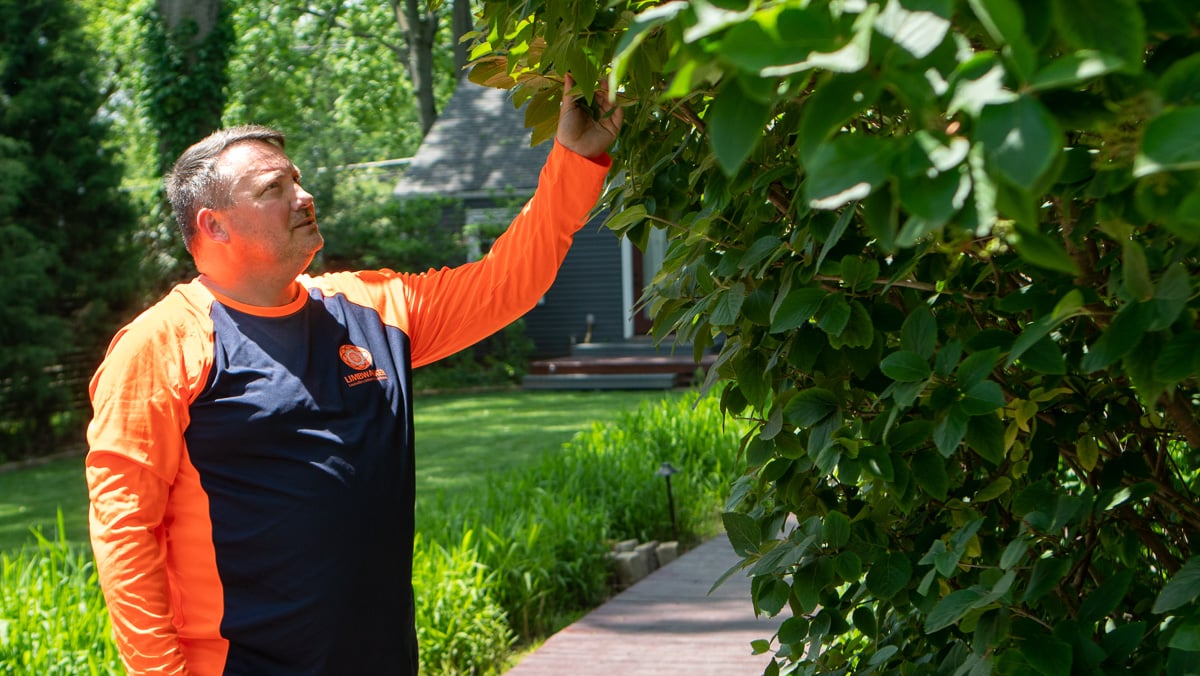
Your trees are a valuable asset on your Louisville property which is why you might be feeling frustrated if you think you have bugs eating tree leaves. Sometimes the signs are highly noticeable. You might have holes in your leaves or see that leaves are jagged or even skeletonized.
But some pests are sneakier and suck the sap from your leaves instead of munching directly on the foliage. If that’s the case, you might notice signs like discoloration and premature drop.
Whatever the case may be, we understand that you want to know What is eating my tree leaves?
In this article we will help you to answer that question. We’ll talk about:
Damage from bugs eating tree leaves
When to be concerned about insects that eat tree leaves
Preventative measures and professional solutions
There are more than 55 common tree pests in our region. Different pests can damage your trees in different ways. While some borer insects damage trees by boring holes in the bark, others feast on the foliage or suck precious sap from your trees.
Here are some of the common insects that eat tree leaves here in Louisville, KY.

When bugs feast on your trees, the damage can show up in different ways. As we’ve mentioned, some pests that feast directly on your leaves are going to cause obvious evidence like holes or even skeletonized tissue.
But other signs that you might have tree pests include:
What gets tricky is that some of these signs can indicate other issues, too. Tree diseases, for instance, can have crossover symptoms. If you’re not sure what’s going on with your tree, it is best to get a professional diagnosis.
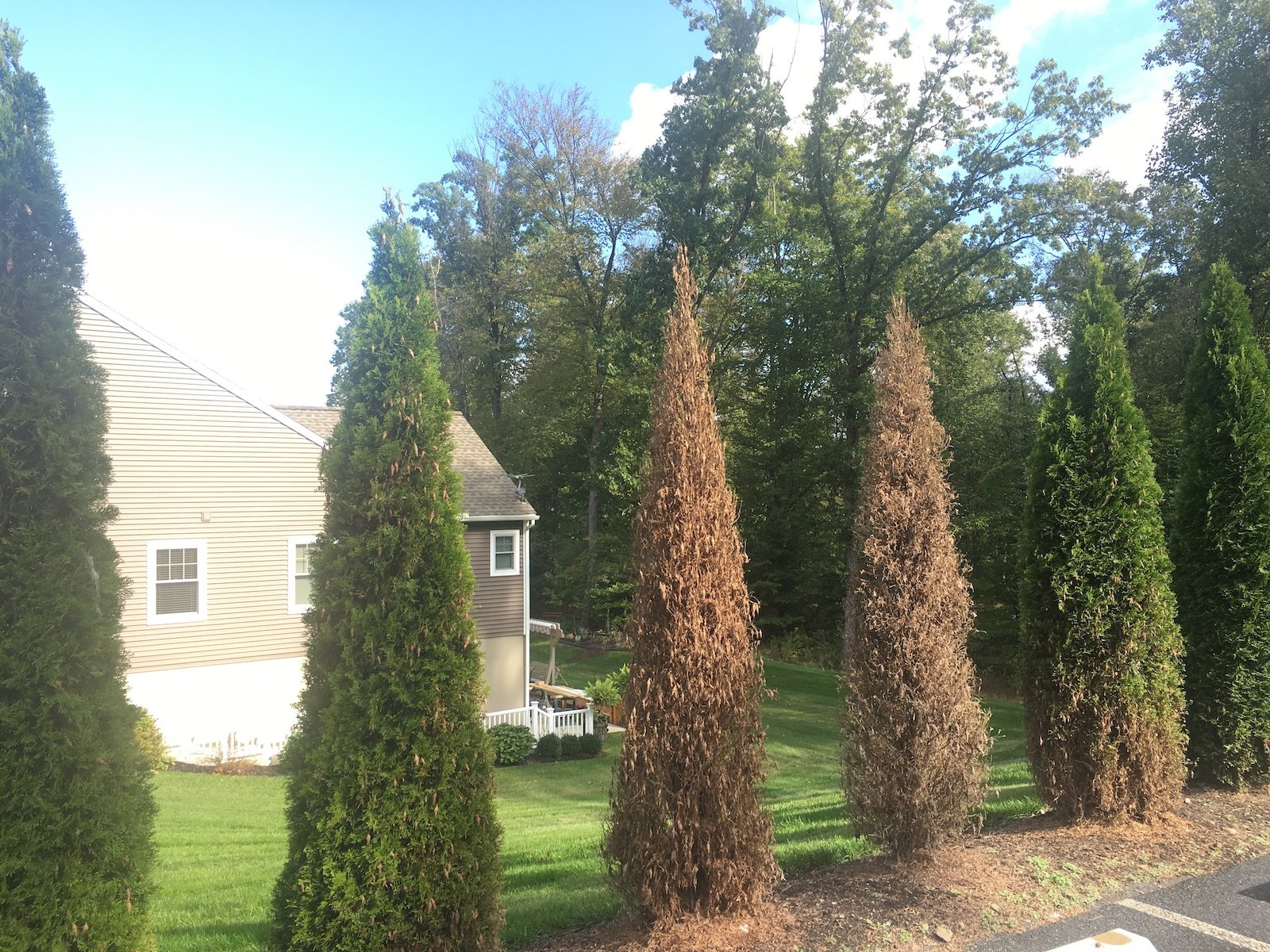
The truth is, if you are noticing signs of pests in your trees, then there is probably a serious problem. Oftentimes pest problems are not noticeable until they’ve become severe. That is especially true for smaller pests like mites that cannot be easily seen. In these cases, the damage will be noticeable ahead of the pest.
Of course, as we’ve mentioned many of the signs of insect damage can also be signs of other problems. Maybe you’ve noticed something is wrong with your tree but you don’t necessarily see any pests.
It’s always best to have a professional evaluate your tree and determine what’s going on. If damage becomes severe, it could lead to the more serious decline of your tree. This can lead to risky problems. The last thing that you want is for a limb to fall because your tree has declined.

Taking good care of your trees can help make a difference in managing any insect infestation on trees. That’s because most tree bugs are more likely to attack trees that are already struggling.
But even healthy trees can be subject to problems with tree pests. Even so, the healthier that your tree is to start with, the better it will fare when it comes to any problem that attacks.
Properly fertilizing, watering, and mulching trees can make a difference in maintaining their health and helping your trees to ward off attacks.
You can also invest in Plant Health Care, which includes both preventative and curative treatments as needed for tree pests. If it’s determined that you have bugs eating your tree, a solution can be put into place. Many tree pests are manageable.

At Limbwalker, we take a proactive approach to tree and shrub care, aiming to prevent problems when we’re able to. We have strong horticultural knowledge and experience, allowing us to make recommendations in regard to what tree pests might be problems on what trees.
We believe that Plant Health Care is a valuable protective measure for your landscape. You never want to lose a tree or shrub, particularly to a problem that could be avoided or treated.
It all boils down to doing what’s best for your Louisville property. You deserve to be able to enjoy your landscape without worries.
If you’d like to learn more about plant health care for your Louisville home, get in touch, get your quote, and get back to enjoying your yard.


